What Is Pavement?
Important Point
Pavement is generally a hard surface that is made with surface materials to make it durable enough.
These materials are laid on that area which is referred to carry vehicular traffic and foot traffic. The main purpose is to refer the vehicle load from the top layer to the subgrade by different layers.
The purpose of providing road pavement is to give sufficient skin resistance, proper riding quality, low noise pollution, favorable light-reflecting, etc.
The main motto is to reduce the vehicular load and transmit it to the subgrade without exceeding the nearing capacity of the subgrade.
Road pavements play a very important role in any type of construction. Road pavements are generally divided into types of pavement in civil engineering, those are flexible pavement and rigid pavement.
Types of Pavement
Generally, pavements that are widely used in construction are divided into two types, those are-
1. Flexible Pavement:
In this type of pavement, also known as conventional flexible pavement, the vehicular loads are transferred by the grain-to-grain contact of the aggregates through the granular structure.
This type of pavements has less structural strength by these types of pavements are widely used nowadays. (e.g. Bituminous Pavement)
2. Rigid Pavement:
In this type of pavement, the vehicular loads are transferred to the sub-soil by flexural strength. This type of pavement is acts as a rigid plate and it is generally longer lifespan and more durable. (e.g. Concrete Pavement )
There is also a type of pavement which is known as combined pavement. Another name of this type of pavement is semi-rigid pavement. In this pavement construction, a thin layer of flexible pavement is provided over the ideal pavement. Generally, this type of pavement is rarely used in construction because of high cost, and skilled labor and we need to perform complex analysis at the beginning.
Also read: Curing In Construction | Concrete Cure Time | Methods of curing
Useful Article for You
- What Is a Contour Interval
- What Is Tile
- What Is the Difference Between a Shower Pan and a Shower Base?
- What Is Raft
- What Is a Window Panel
- What Is a Frame Structure
- What Is the Measurement for a Queen Size Bed
- What Is Considered Livable Space
- What Is One Way You Can Save Electricity?
- What Is Mdf Mean
- What Is a Bundle of Shingles
- What Is a Gallon of Water Weigh
- What Is Overhang
- What Is Sand Blasting
- What Is a Span Bridge
- Type of Arch
- What Is a Soil Stack
- What Is the Little Black Diamond on a Tape Measure
- What Is a Louvered Door
- What Is a Spread Footing
- What Is Leveling
- What Is Pedestal
- What Is Plumbing Fixtures
- What Is a Mat Slab
- What Is a Highway Flyover
- What Is Transported Soil
- What Is Slab Construction
- What Is Calacatta Quartz
- What Is Hydraulic Cement
- What Is Auxiliary View
- Sheepsfoot Roller
- Live Load Vs Dead Load
- What Is 1 Flight of Stairs
- What Is Refractory Cement
- What Is Isometric Perspective?
- What Is Concept Drawing
What Is Flexible Pavement?
Flexible is a type of pavement that is mostly used in modern days. In inflexible pavement, the vehicular loads are transferred to sub-soil by the grain-to-grain contact of the aggregates through the granular structure.
Here, the wheel loads of vehicle stresses act on the pavement, and then it’s distributed to a larger area of contact and then the stress decreases with the depth.
According to the vehicular loads; the layers of the flexible pavement are to be decided.
To get the better quality of the flexible pavement we need to apply the maximum compressive stress, you can also provide low-quality material at the bottom portion.
Generally, bituminous materials are used to construct the flexible pavement and if there is some settlement then you need to consider the overall depth performance.
Types of Flexible Pavement
Generally, 3 types of pavements in road construction are divided into three types, those are following.
1. Conventional layered flexible pavement:
Conventional layered flexible pavement is a type of flexible pavement where high-quality materials are placed at the top of the pavement to resist the maximum stress that comes from vehicular loads and low-quality and cheap materials are used in the bottom part of the layers.
2. Full-depth asphalt pavement:
In full-depth asphalt pavement, also considered a type of pavement structure, we provide a total bituminous layer directly on the subsoil.
This type of pavement is suitable for high-traffic areas where local materials are not available.
3. Contained rock asphalt mat (CRAM):
In this type of pavement, an open-graded or dense layer is provided in between two asphalt layers. After that asphalt concrete is placed over the sub-soil. This asphalt concrete will reduce the vertical compression of sub-grade soil and protect surface water.
Flexible Porous Pavement
Flexible porous pavement, sometimes referred to as soft pavement, is a type of pavement that is the combination of two suppliers, which are Flexi pave and porous paving.
These are made with the same materials and the same process will be followed. A recycled passenger tire is used to produce porous pavement.
This type of pavement is eco-friendly and it has the capacity to purify the water of 3000 gallons/ per square foot/ hour it also cleans the water if water passes through it.
Flexible porous pavement can be installed everywhere, you can also install it on soft clay.
Also Read:Repairing Water Damaged Wall | How to Repairing Water Damaged Wall | How to Fix Water Damaged Wall
What Is Rigid Pavement?
To define rigid pavement, it is a type of pavement that transfers the load in a wider range and it has good flexural strength.
It does not have so many layers like flexible pavement because it is constructed with a single layer.
The rigid pavement is directly placed over the well-compacted sub-grade granular soil or stabilized material in a single layer.
A sub-base layer is called a concrete layer which is laid between concrete and sub-grade.
In the rigid pavement, the vehicular loads are transferred through the slab section and it acts like an elastic plate which is resting on a viscous medium. The rigid pavement is generally constructed by plane cement concrete.
The rigid pavement mechanisms are based on the plate theory, which states that the plane before loading is remaining the same after loading.
Useful Article for You
- Moment Frame
- Monolithic Slab
- Zero Force Members
- How Much Does a Yard of Concrete Weigh
- Cmu Wall Meaning
- Gradient Road
- Pile-Cap
- Budget Sunroom Ideas
- What Is Gypsum Board
- Types of Vaulted Ceilings
- Well Points
- How Does Baking Soda Remove Blood from Carpet
- What Are Forms in Construction
- How Heavy Is Dirt
- Tender Meaning in Architecture
- Dark Olive Green House
- Cast in Place Concrete
- Lean to Roof
- What Is a Pitched Roof
- How Tall Is an Average Door
- Grade Beam Foundation
- Window Sill Height
- What Is Spandrel Beam
- Concrete Cold Joint
- Black Water Grey Water
- Types of Traps
- Types of Pipe
- Dry Pack Concrete
- Roof Tiles Types and Prices
Types of Rigid Pavement
When it comes to the classification of pavement, rigid pavements are classified into four types, those are-”
1. Jointed Reinforced Concrete Pavement (JRCP):
In rigid pavement, reinforcement is always provided to provide more structural stability. It can increase the spacing by 10 to 30 m.
Here, dowel bars are provided to carry loads and reinforcement prevents cracks.
2. Jointed Plain Concrete Pavement (JPCP):
This type of pavement is constructed with plane cement concrete which has closely spaced construction joints.
Here, dowel bars are placed to carry the loads and the joint spacing is near about 5 to 10 m.
3. Continuous Reinforced Concrete Pavement (CRCP):
Continuous reinforced concrete pavement is a type of pavement where no joint is to be provided.
4. Pre-Stressed Concrete Pavement:
It is a type of pavement where the pre-cast slab is placed on the subsoil. It is a costly type of pavement and it requires more skilled labor and high accuracy.
Road Pavement Layers
When discussing types of pavement materials, there are generally eight types of layers present, which are-
1. Compacted sub-grade (150-300 mm):
In all pavement layers, the Compacted sub-grade layer is the bottom-most layer. It must be properly compacted to reach its final density and optimum moisture content.
2. Sub-base course (100-300 mm):
It is one of the base courses which plays a major role in providing structural support. The sub-base course is made with more fine materials.
3. Base course (100-300 mm):
It is placed just below the surface of the binder course which provides additional load distribution capacity and sub-surface drainage. It is made with some crushed slag or stabilized materials.
4. Prime coat:
A prime coat is a cutback bitumen that is used to bind two layers.
5. Binder coat (50-100 mm):
A binder coat is basically a bilk asphalt concrete that is provided for binding purposes.
6. Tack coat:
A tack coat is basically an asphalt coating that is used for the binding purpose between two layers.
7. Surface course (25-50 mm):
It is the course that carries the direct vehicular loads and we provide the best quality materials at this layer. It is generally constructed with asphalt concrete.
8. Seal coat:
A seal coat is a waterproof coating that is provided on the upper portion of the pavement at the end of the construction.
What Is Pavement Short Answer?
Pavement is a path with a hard surface, usually by the side of a road. … The pavement is the hard surface of a road.
What Is Pavement Called?
A sidewalk (North American English), pavement (British English), footpath (Oceanian English and Indian English), or footway, is a path along the side of a road. Usually constructed of concrete or asphalt, it is designed for pedestrians.
What is the purpose of pavement, or rather, what pavement is used for?
The primary function of a pavement is to transmit loads to the sub-base and underlying soil. Modern flexible pavements contain sand and gravel or crushed stone compacted with a binder of bituminous material, such as asphalt, tar, or asphaltic oil. Such a pavement has enough plasticity to absorb shock.
What Is Pavement and Its Types?
Basically, when asking how many types of pavement, all hard-surfaced pavement types can be categorized into two groups, flexible and rigid. Flexible pavements are those which are surfaced with bituminous (or asphalt) materials. … On the other hand, rigid pavements are composed of a PCC surface course.
What Is a Rigid Pavement Used For?
There are two main types of road construction. “Rigid pavement,” such as concrete, can only be used on stable ground, and this is what pavement picture generally portrays.
“Flexible pavement,” such as bituminous materials, as described below, can be used on ground where some movement is expected.
What Is the Advantage of Rigid Pavement?
The largest advantage of using rigid pavement is its durability and ability to hold a shape against traffic and difficult environmental conditions. Although concrete pavement is less expensive but has less maintenance and good design life.
What Are Types of Road Pavement?
When asking what are the types of pavements?, rigid pavements can be classified into four types:
- Jointed plain concrete pavement (JPCP),
- Jointed reinforced concrete pavement (JRCP),
- Continuous reinforced concrete pavement (CRCP), and.
- Pre-stressed concrete pavement (PCP).
What Part of the Road Is Pavement?
The Road Pavement, or what some might say paving is also known as, is the portion of the road located directly above the subgrade, and beneath any wearing surface. In urban areas it is often bordered by kerb & channel, and in rural areas by road shoulders. It is typically constructed from compacted imported material such as crushed rock.
Types of Road Pavement
- Flexible pavements: Those which are surfaced with bituminous (or asphalt) materials. These types of pavements are called “flexible” since the total pavement structure “bends” or “deflects” due to traffic loads. A flexible pavement structure is generally composed of several layers of materials which can accommodate this “flexing”.
- Rigid pavements: Those which are surfaced with portland cement concrete (PCC). These types of pavements are called “rigid” because they are substantially stiffer than flexible pavements due to PCC’s high stiffness.
What Is Flexible Pavement?
Flexible pavements are those which are surfaced with bituminous (or asphalt) materials. These types of pavements are called “flexible” since the total pavement structure “bends” or “deflects” due to traffic loads.
Types of Flexible Pavement
The following types of construction have been used in flexible pavement: Conventional layered flexible pavement, Full – depth asphalt pavement, and Contained rock asphalt mat (CRAM).
What Is Rigid Pavement?
pavement, in civil engineering, durable surfacing of a road, airstrip, or similar area. Rigid pavements are made of concrete, composed of coarse and fine aggregate and portland cement, and usually reinforced with steel rod or mesh.
Types of Rigid Pavement
- Jointed plain concrete pavement (JPCP),
- Jointed reinforced concrete pavement (JRCP),
- Continuous reinforced concrete pavement (CRCP), and.
- Pre-stressed concrete pavement (PCP).
Like this post? Share it with your friends!
Suggested Read –
- What Is Concrete Screed | Concrete Screed Specifications | Characteristics of Concrete Screed | Advantages &Disadvantages of Concrete Screed
- Fly Ash in Concrete | Advantages & Disadvantages of Fly Ash concrete | Use of Fly Ash in Concrete | Applications for Fly Ash concrete | Benefits of Fly Ash Concrete
- Cracking Moment | Cracking of Concrete | Types of Cracks in Concrete | Calculating of Cracking Moment for Hollow Rectangular Beam
- Specific Gravity Test of Bitumen | Procedure of Specific Gravity Test of Bitumen | Result of Specific Gravity Test of Bitumen
- Difference Between Flexible Pavement and Rigid Pavement | What is Pavement | Types of Pavement
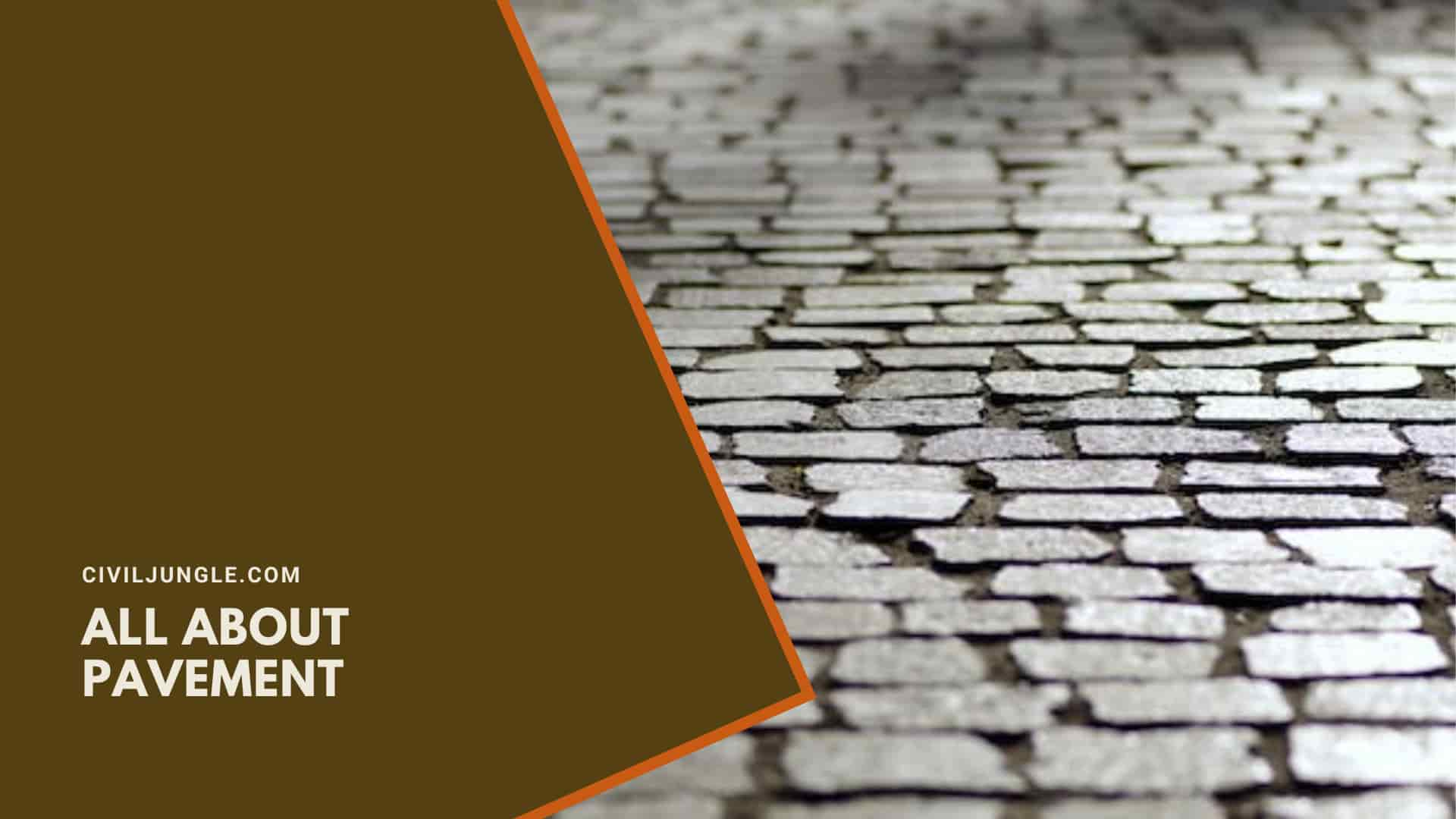
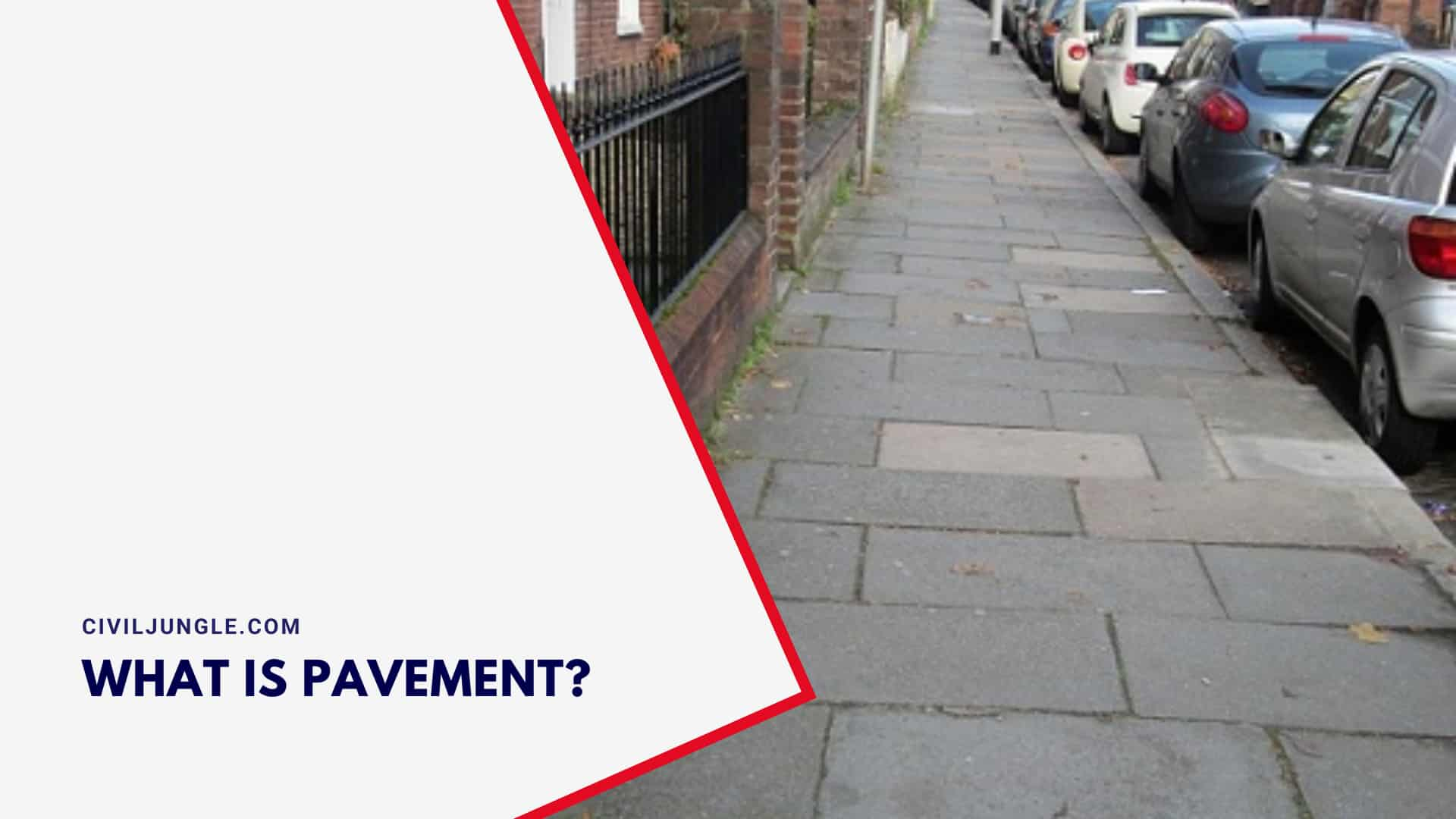
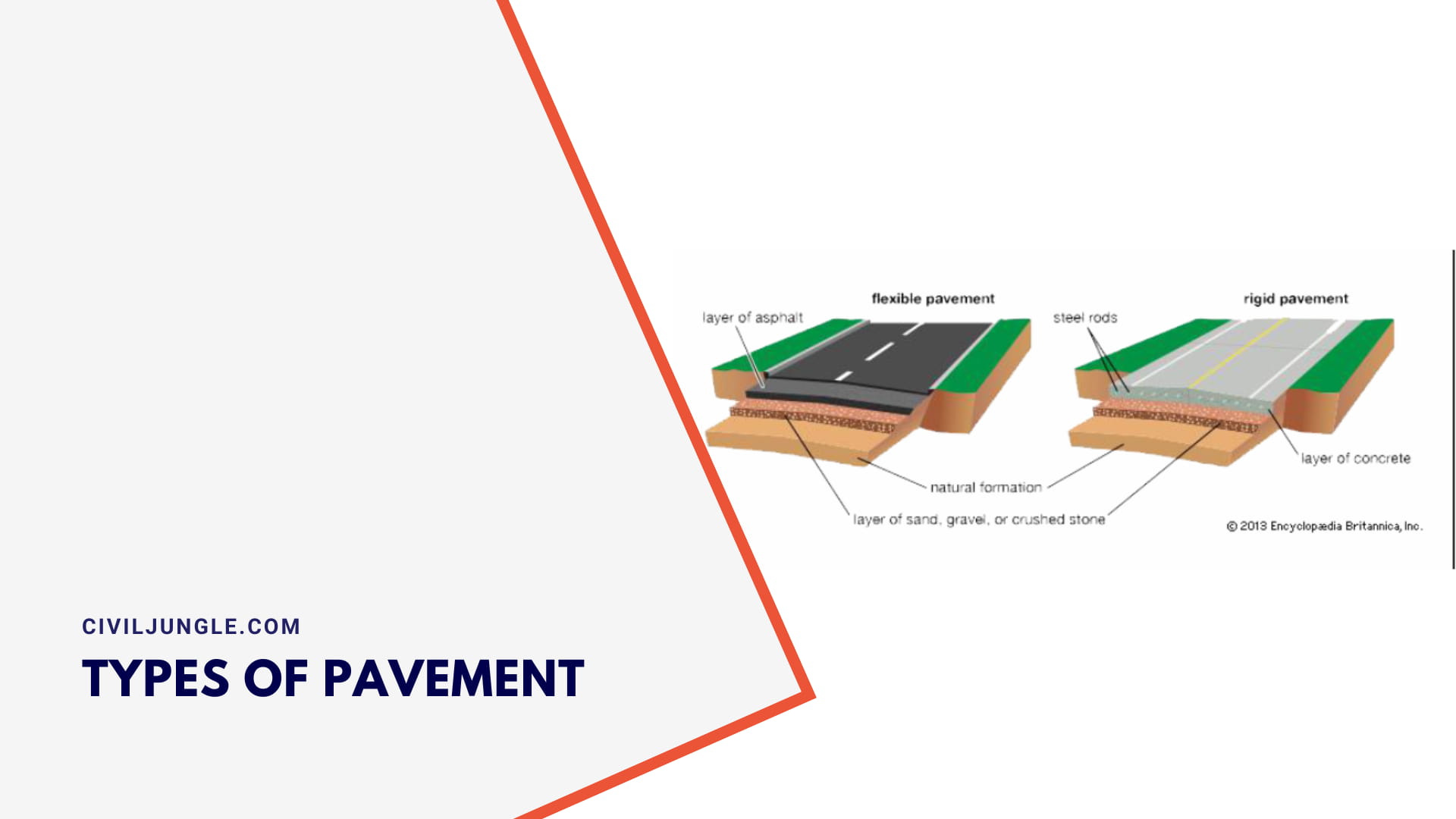
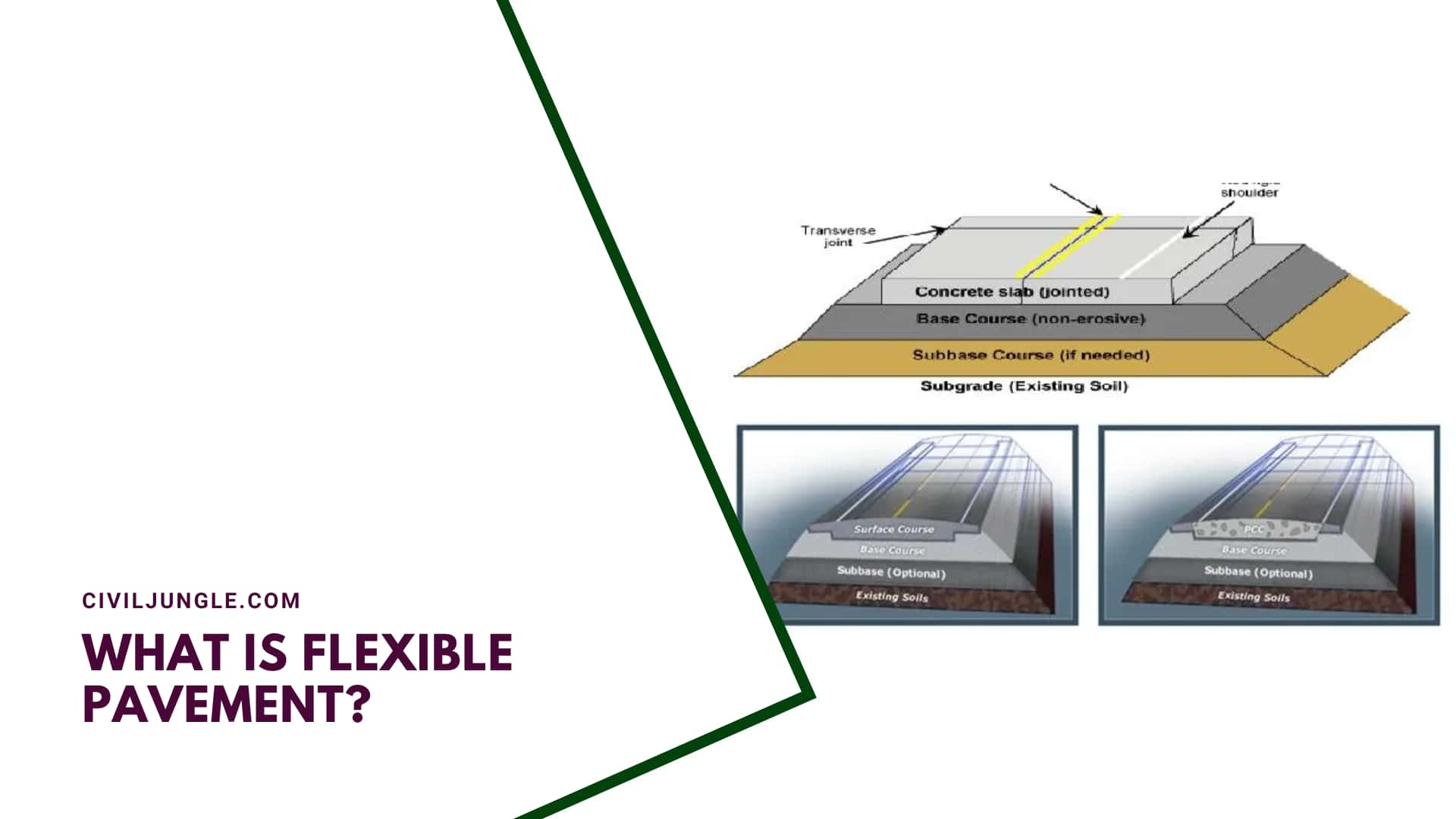
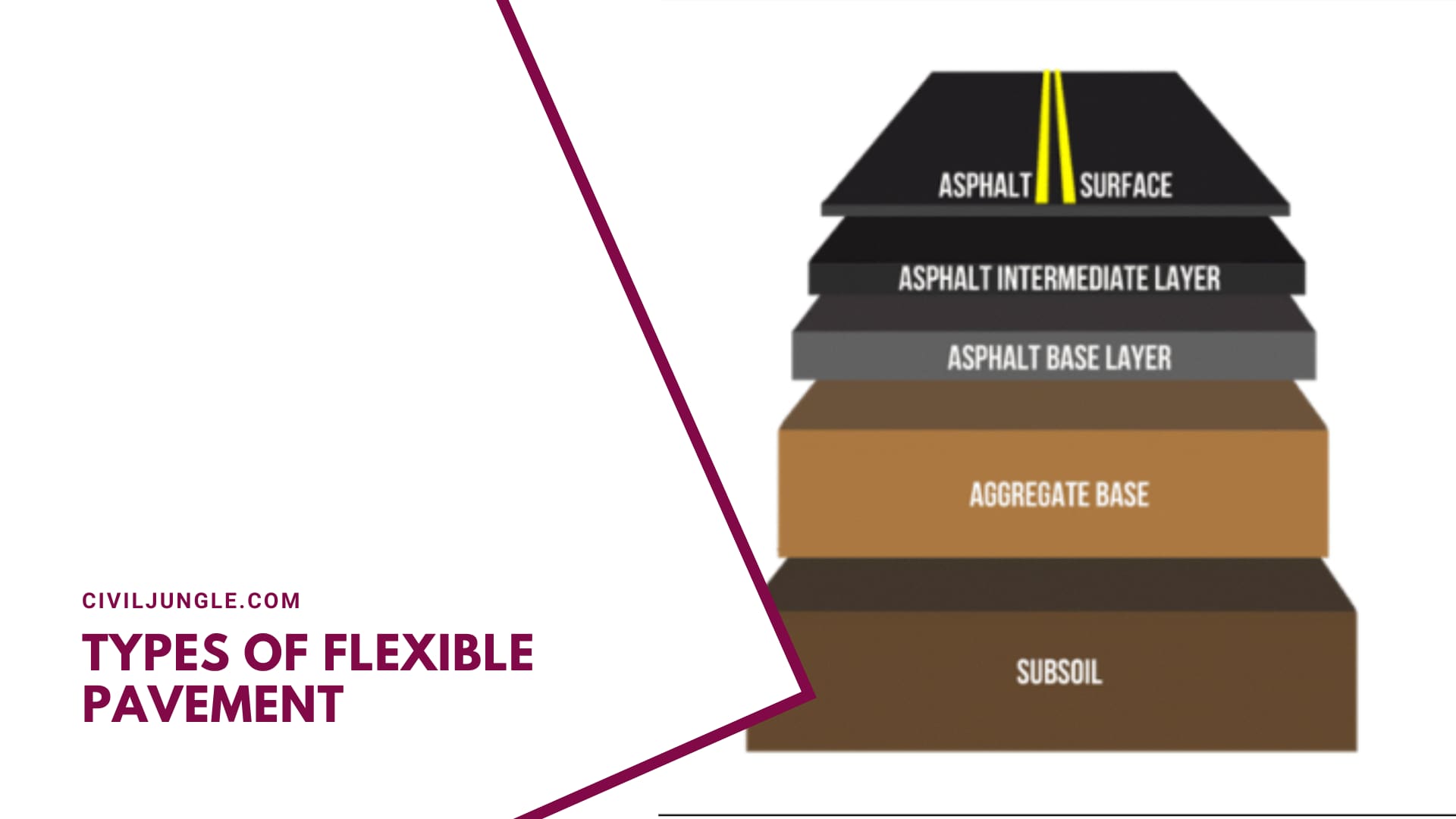

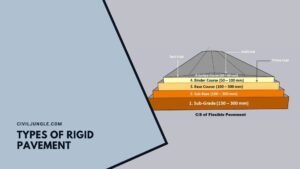


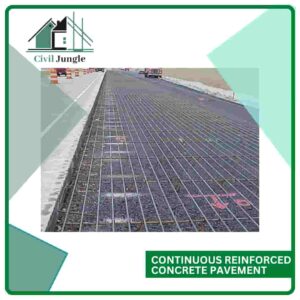


Leave a Reply